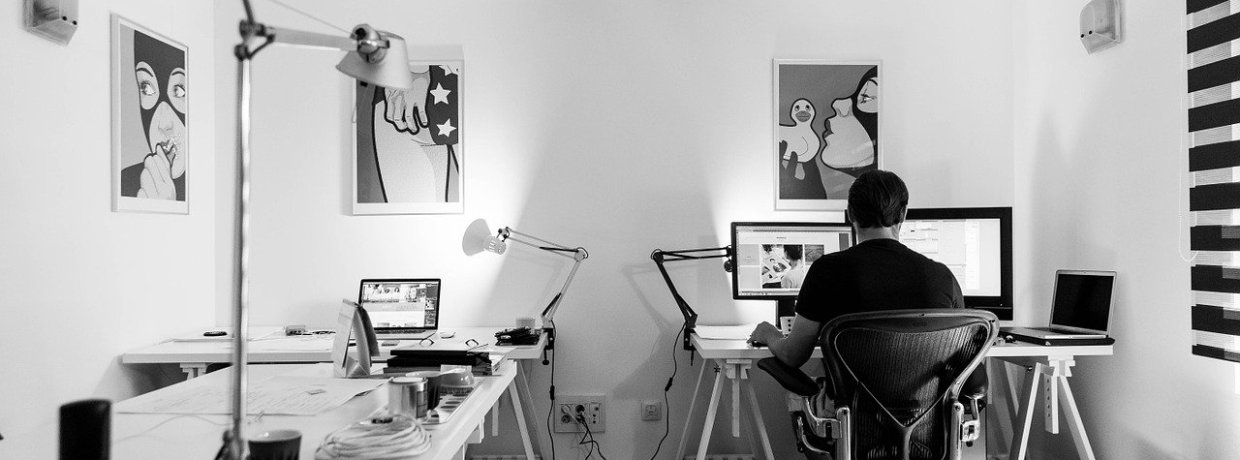
Subscribe to our newsletter!
We don't spam. You will only receive relevant and important tips for you and your business.
Unsubscribe anytime.
By Darren DeYoung
Web design is a critical and vital part of any successful business strategy. Users form their first impressions of a business within seconds of visiting the website. Self-publishing a website is easy to do, but there is no substitute for a well-thought-out design that is executed by professionals.
Whether you’re on the verge of building, updating, or revamping a website, the web company you select will play a critical role in the success of your website. Therefore, it is important to ask the right questions along the way.

Not only is it important to ask the right questions, but it is important that you show up prepared because good designers will ask many questions in return. Start by asking yourself:
When users visit your website, they are not only searching for your products and services, but they are also seeking a business they can partner with--a business with a story, or a cause that they relate to and support.

Redesigning an existing site versus starting from fresh involves different approaches. Keep in mind that each option will have different price points as well. In some cases, if your website is really outdated and poorly built, it may be cheaper to build a new one from the ground up. Explore your options, know what you want, and be prepared to discuss your budget during your first meeting.
Do you want to sell products? Connect with potential customers? Convey your values and messaging? You are likely trying to accomplish many goals with your website, but you need to have a clear idea of your purpose.
Knowing your target audience is critical because your website needs to connect with it’s audience (link to 10 effective tips to reach your audience through writing once it is transferred to Hoist.digital) in the first few seconds after they land on your site. Incorrect messaging will cause that user to bounce off your site and look for other options. The more details you can provide about your target audience to the designer, the better.
The best target audience description, however, will also include their career, annual income, education level, and other demographic data. By creating a hypothetical profile of your ideal customer, you can cater to that customer’s needs through your website.
You may not know whether your site will need custom functionality until after your first meeting, but you should consider it as some businesses have very unique models. Custom functionality could include special CRM integrations, inventory controls, or membership management reporting. You want your audience to have a positive user experience when visiting your site, and your website’s functionality is key to providing this experience.
If you sell products, they should be easy to purchase on your website. An eCommerce website will allow you to sell products on your site, but you should also consider the nuances of your products. A web designer will ask about pricing structures, product add-ons, delivery arrangements, global distribution, inventory management, and more. Have this information ready for your first meeting.
You likely aren’t a design expert, and that’s okay. But, you probably know what you like when you see it. Take some time to identify websites that you like and note what you like about them. Evaluate what others are doing well--or not well enough. What you like may not work well for your own website, but it can certainly lead to a good discussion with the web designer so they can integrate your preferences into the design.
So the day of the meeting has arrived. You have done your homework and are prepared. But, there are a few things you need to ask to determine whether you’re working with the right team.
This one’s important. Many agencies advertise web design and development as a service offering but don’t actually have the staff for these projects. As a result, they outsource the work. This can be a workable solution, but this can also lead to communication challenges, project delays, and additional costs. Web designers are asked to do many things including:
Many designers know their strengths and weaknesses and will outsource some tasks to a trusted business partner- this is normal. Some designers will outsource the majority of the project to another agency. Depending on what you’re comfortable with, you should ask if tasks are outsourced and where they’re outsourced to.
A well-performing project should go through a dedicated process. We call ours the “5 D’s”.
At Hoist, a project manager will oversee and guide your project through each stage from start to finish. They will provide critical updates and keep stakeholders informed during the project.
To make things easier for the web design team, you should gather appropriate assets:
Depending on the project, there may be more items that need to be provided.
This should always be discussed. Some agencies tout that they can build a new website in as little as a week, but in reality, that isn’t possible for a quality site. Following the Discovery phase, the web team will have a better idea of how long the project will take and an estimated timeline can be provided.
Every project is different and has different requirements. If all deadlines are met, the project will stay on course. A good team will do their best to mitigate any delays, but sometimes it is inevitable.
The most cost-effective option for a website is a templated website. These are developed to be used for every kind of website, but this may not be the best option for your business...and may even hurt your business in the long-run. Since templated websites are built for broad use, these sites have a lot of moving parts and contain excessive features that are never used. This bloat will undoubtedly slow down your website and be more difficult to fix. It will also have a domino reaching if something goes wrong.
A custom website, on the other hand, is a better long-term solution. It’s built for your needs (i.e. it doesn’t come with “bloated” features that are unnecessary for your business), it is more efficient, and allows you to easily make changes. Plus, it can be adapted as your business grows.
At Hoist, we incorporate SEO into every website design from the beginning. Our developers work directly with SEO specialists to ensure that when the site is launched, it is optimized and positioned for success. For long-term success, the SEO team can create a strategy to grow your business many years after a successful launch.
Website testing ensures that your site functions as intended and that your online visitors have a positive user experience. But your online visitors use many different devices (mobile vs desktop vs tablet) and many different browsers (Chrome, Safari Firefox, Edge, Internet Explorer, etc.). A quality site will adapt to each device and browser, so ask about quality assurance testing, cross-browser compatibility, and the functionality of forms, links, and scripts.
Some web developers require website hosting on their servers, so you should make sure the domain name will be registered in your company’s name. After all, the website belongs to your company, not the agency who built it. Failure to inquire about this may lead to unexpected surprises down the road if you sever ties with the agency.
Once a website is built, it needs regular maintenance. With daily advancements, technological changes, and the constant threat of malware and security issues, you can’t just build it and leave it be.
You may want to receive general training on how to periodically update content on your own, regular security scans for malware; or regular updates of themes, plugins, and modules in your CMS. Keeping your site secure is critical and most website hacks happen when a website has not been updated. Be sure to explore what options are available to you after the website is launched.
Testimonials and reviews are generally pretty reliable. If you ask to speak with a past client, they will most likely give you the contact of someone who will rave about them, which is expected. If they don’t have anyone to put you in touch with, you may want to move along to the next prospect.
A reputable designer will be more than happy to share their portfolio of past designs. Plus, it will be a great way to see if you like their style.
If you receive resistance to this question, again, it may be a sign that you should consider someone else.
Asking questions is a great way to get to know someone and to build rapport and trust. Your website build or redesign is no small project and it is best to uncover everything from the outset. By no means is this list of questions exhaustive or complete, but it is a good way to generate positive discussions.
Unlike an email, an in-person discussion or phone call will tell you a lot about a person. Discussions allow you to observe reactionary inflections in the person’s tone. You can also get a gist of their personality and a better understanding of what they’re about.
Hoist has years of experience creating engaging and functional websites and we’d love to do the same for you. If you’ve made it this far, take the first step and contact us.
Start asking questions